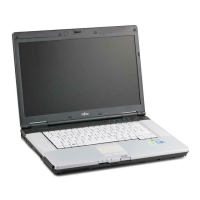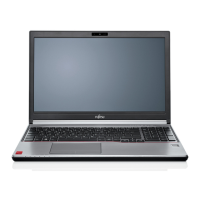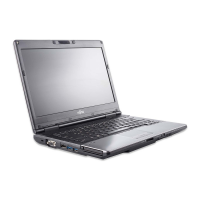88
- Device Ports
Serial Port
Universal Serial Bus Ports
The Universal Serial Bus 2.0 ports (USB) allow you to connect USB devices such as external game pads,
pointing devices, keyboards and/or speakers. There are four USB 2.0 ports on your notebook: three on the
right side and one on the left.
In order to connect a USB device follow these steps:
1 Align the connector with the port opening.
2 Push the connector into the port until it is seated.
The serial port, or COM port, located on the system
and on the optional Port Replicator allows you to
connect serial devices, such as printers or scanners.
In order to connect a serial interface device follow
these easy steps:
1 Align the connector with the port opening.
2 Push the connector into the port until it is seated.
3 Tighten the two hold-down screws, located on each
side of the connector.
Figure 28. Connecting a Serial Device
MICROSOFT WINDOWS VISTA USERS ONLY: WHEN ATTACHING A USB DEVICE, DO ONE OF THE FOLLOWING: BE SURE
TO ATTACH THE DEVICE BEFORE TURNING ON YOUR SYSTEM, OR, WAIT FOR APPROXIMATELY THREE MINUTES
AFTER THE SYSTEM BOOTS UP BEFORE ATTACHING THE USB DEVICE.
IF YOU PREFER NOT TO WAIT TO CONNECT YOUR USB DEVICE, YOU MUST DISABLE THE SELECTIVE SUSPEND
FEATURE. TO DO SO, GO TO START > CONTROL PANEL. IN THE LEFT PANEL, SELECT CLASSIC VIEW. CLICK ON
POWER OPTIONS > CHANGE PLAN SETTINGS > CHANGE ADVANCED POWER SETTINGS. SELECT USB SETTINGS,
THEN SELECT DISABLED FROM THE PULL-DOWN MENU FOR USB SELECTIVE SUSPEND SETTING. CLICK [OK] TO
COMPLETE THE PROCESS.

